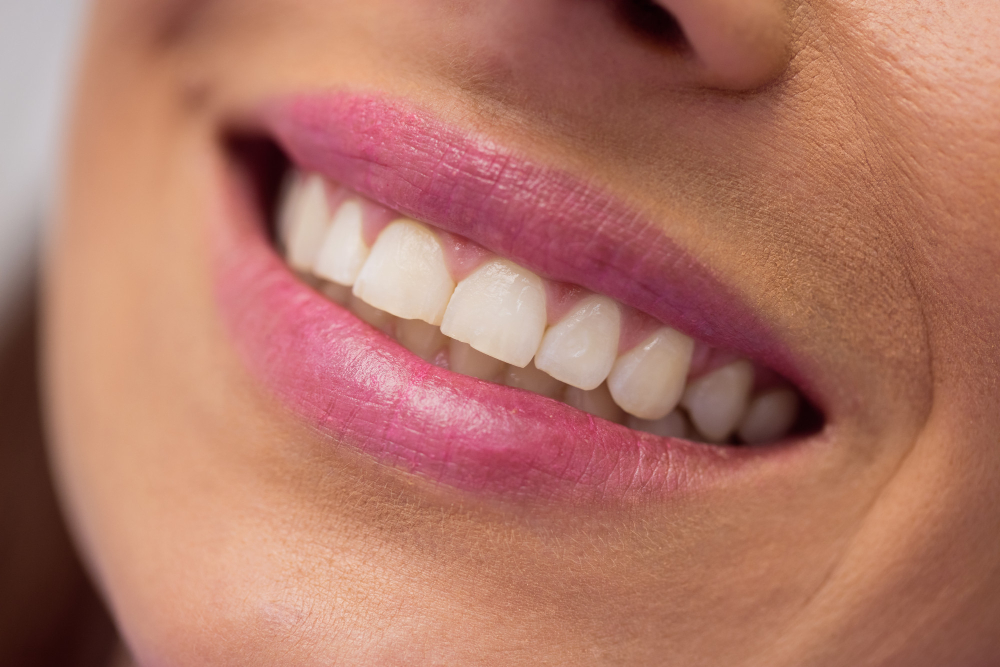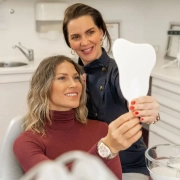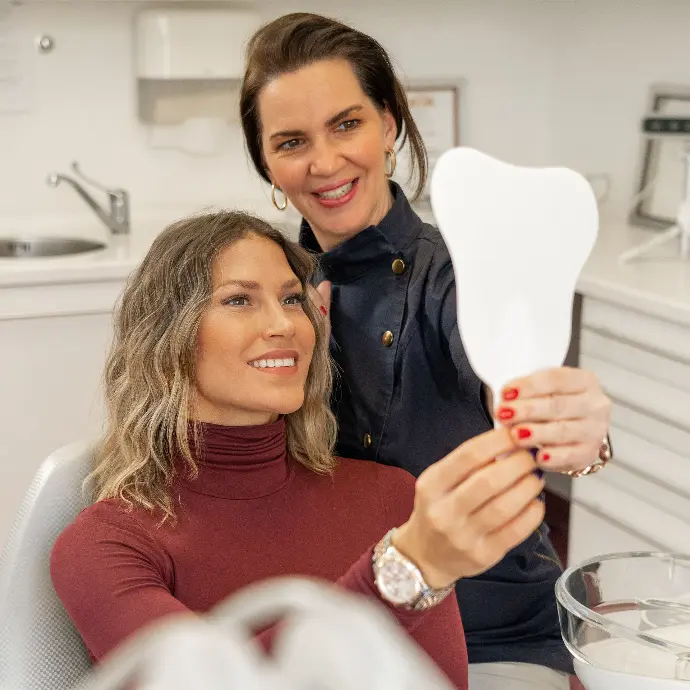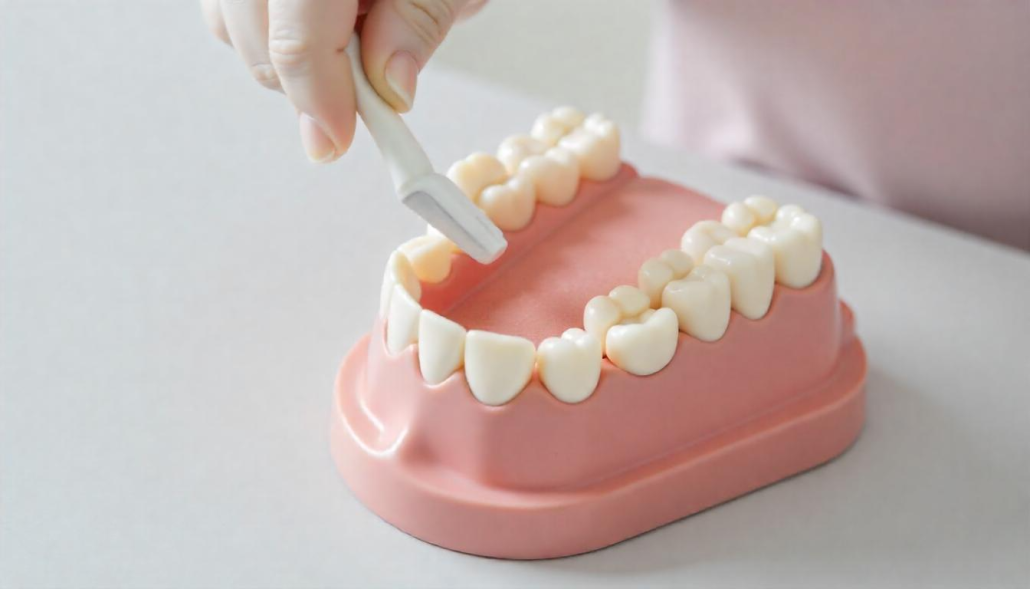Direct veneer for small corrections – when teeth do not need to be polished
Direct Veneers: when a small correction is enough
Krista had been bothered by a small gap between her two upper incisors for a long time. It wasn't a serious aesthetic defect, but every time she smiled, she felt like everyone was staring at her. She didn't want braces and was afraid of grinding solutions. A friend of hers recommended the Dental Angels clinic, where her doctor is direct veneer suggested the following option: fast, painless, and does not require tooth loss.
During the first consultation, Krista learned that the direct veneer minimally invasive aesthetic dentistry one of the most gentle procedures. In this case, the surface of the tooth is not ground down, but the desired shape is directly built up from a special composite material. The result is immediate: in a single session, the smile gets new proportions, a new color and a uniform surface.
How is the direct veneer making?
The direct veneer is a precise but fast process. At the beginning of the treatment, the doctor takes photos and a digital impression to design the exact curve of the new shape. Then, the composite material is built up layer by layer, which cures under light, so it can be modeled immediately. The color is matched to the natural shade of the tooth, so the new surface blends in completely unnoticed with the other teeth.
The practice often uses a mock-up test, where the patient can see what the new smile will look like before the final design is made. This helps ensure that the shape and length perfectly match the character of the face. The entire procedure is usually completed within 1-2 hours and provides an immediately photogenic result.

When is it recommended and when is it not?
The direct veneer It is an ideal choice if you want to correct minor aesthetic defects: a broken tooth edge, a small gap, a slight color difference or a shape asymmetry. Since it does not require tooth grinding, it preserves the integrity of the enamel, making it a completely reversible procedure.
However, not in all cases the direct veneer is the best solution. If the teeth are significantly crowded, have a major discoloration or extensive enamel loss, porcelain veneers may be a more durable alternative. Dental Angels doctors will decide on the best, long-term result based on a detailed diagnosis in each case. The goal is always to minimize the intervention, but maximize the effect.
Durability and care – what to look for direct veneer after?
The direct veneer With proper care, it will retain its shine and shape for years. After treatment, the most important thing is to brush your teeth gently and avoid heavy chewing in the first few days. The composite material may discolor over time, but this can be easily restored with regular polishing.
Patients are called back every six months for a check-up, where the surface of the veneers is gently repolished. In most cases, patients can decide after 4–6 years whether to keep or replace the veneers. This is what Kriszta did: three years later, she was still smiling happily, and when a professional portrait was taken of her at her new workplace, no one would have thought that the small gap between her teeth had ever bothered her.
The direct veneer so it is not only a quick and minimally invasive solution, but also a kind of self-confidence-boosting small intervention. Thanks to modern materials and precise technique, it has a natural effect and in most cases fits perfectly without grinding. As they say at Dental Angels: sometimes the subtlest change makes the biggest difference, because a beautiful smile is not necessarily new, it just finally becomes visible.


































